Manulla River
River sampling got underway on the Manulla River behind the Belcarra Community Centre on Sunday 15th May 2022. A lovely sunny day and a lovely group of people gathered from the village and from other parts of Mayo. We learnt how to take a kick sample from the river using a long handled square net, specially designed for the job (net bottom is straight and sits on the river bed). It was important to find a fast flowing area that was gravelly and wasn’t too deep. Sampling involved facing downstream (net opening faced upstream) and kicking the river bottom, to allow any tiny invertebrates to flow with the current into the net. Three 30 second samples were taken about a metre apart.
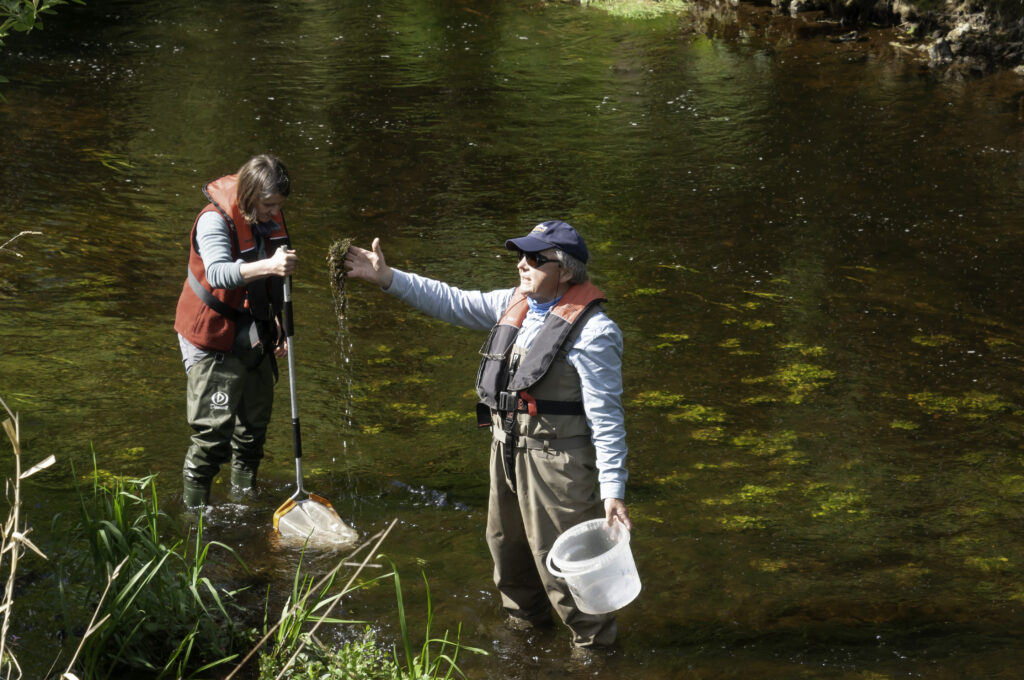
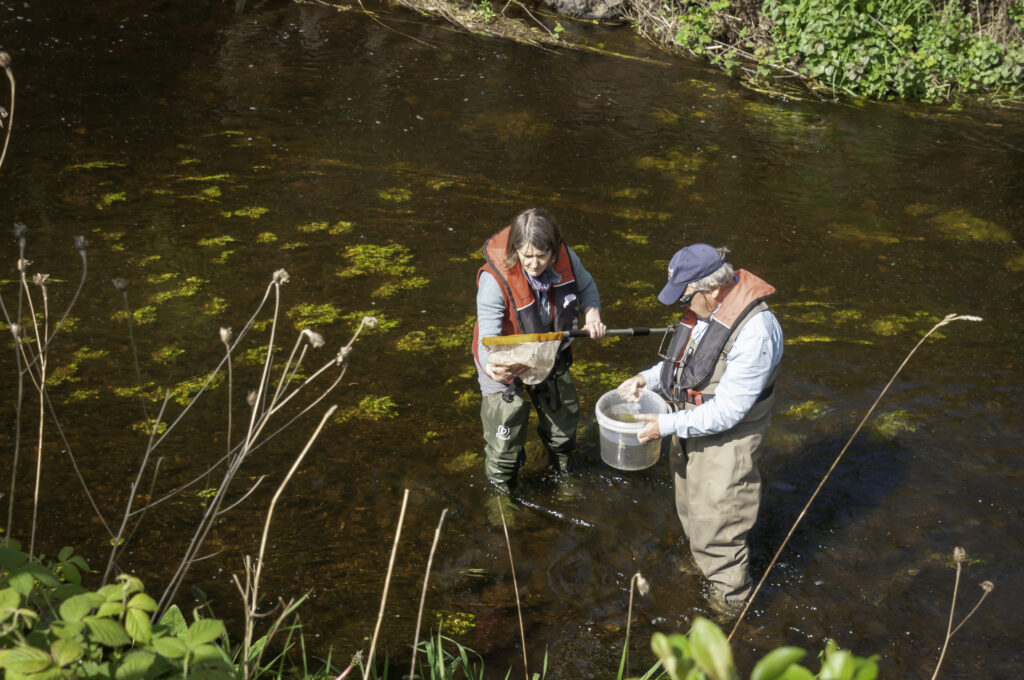
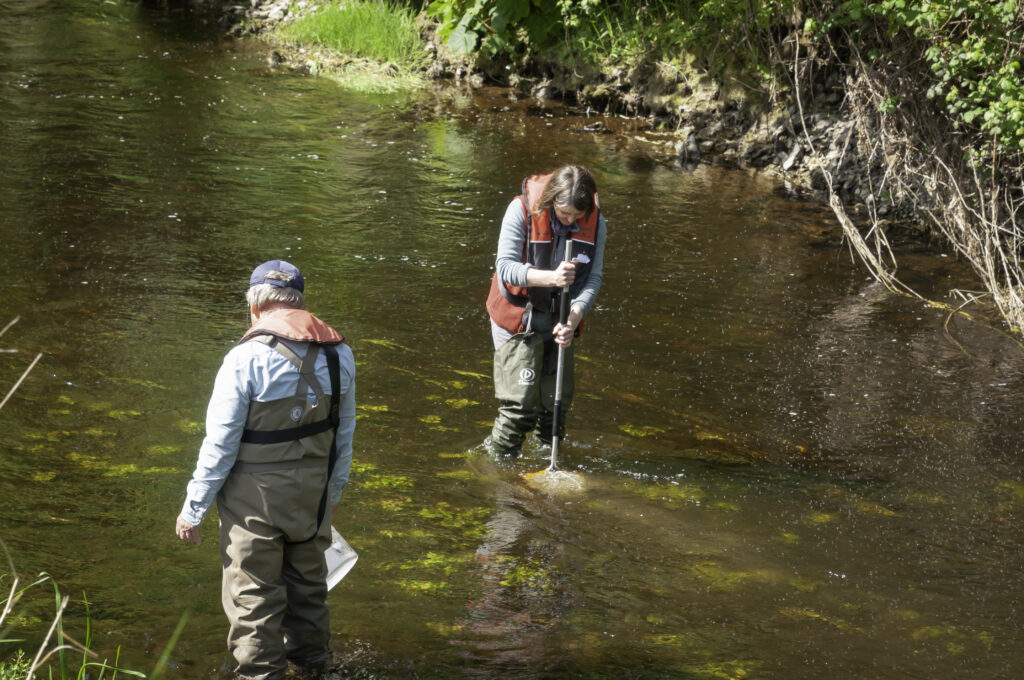
The contents of the net were then emptied into a large white tray pre-filled with water so the invertebrates could continue to breathe in their aquatic world. A clever technique to separate the river debris from the rest of the sample was demonstrated (pouring off the clear waters into the tray but being sure not to lose any invertebrates in the debris before it was put back into the river).
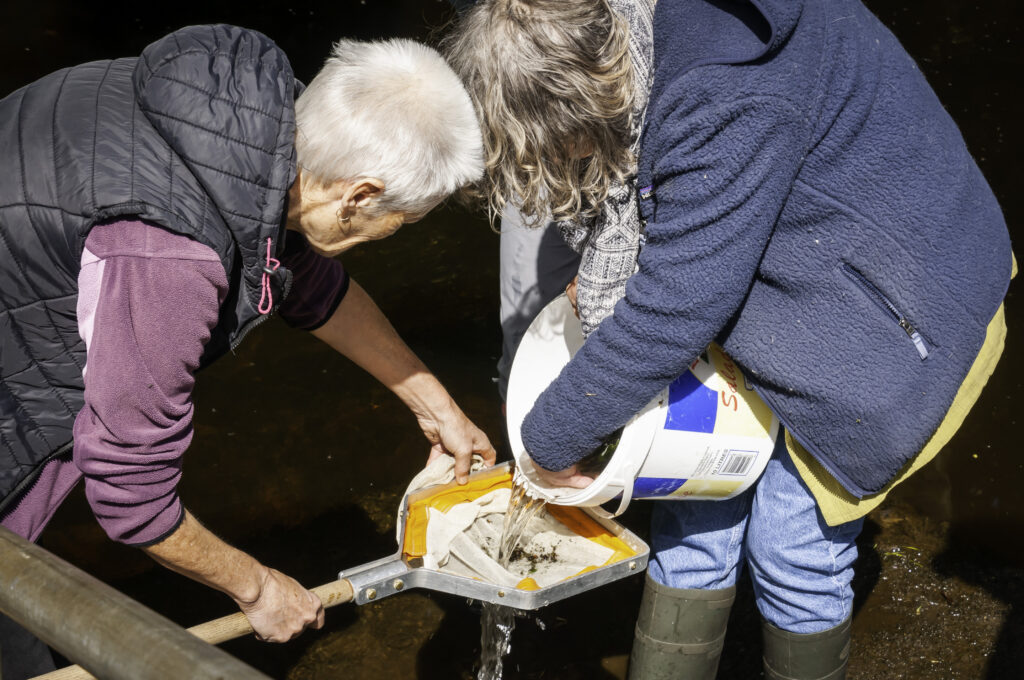
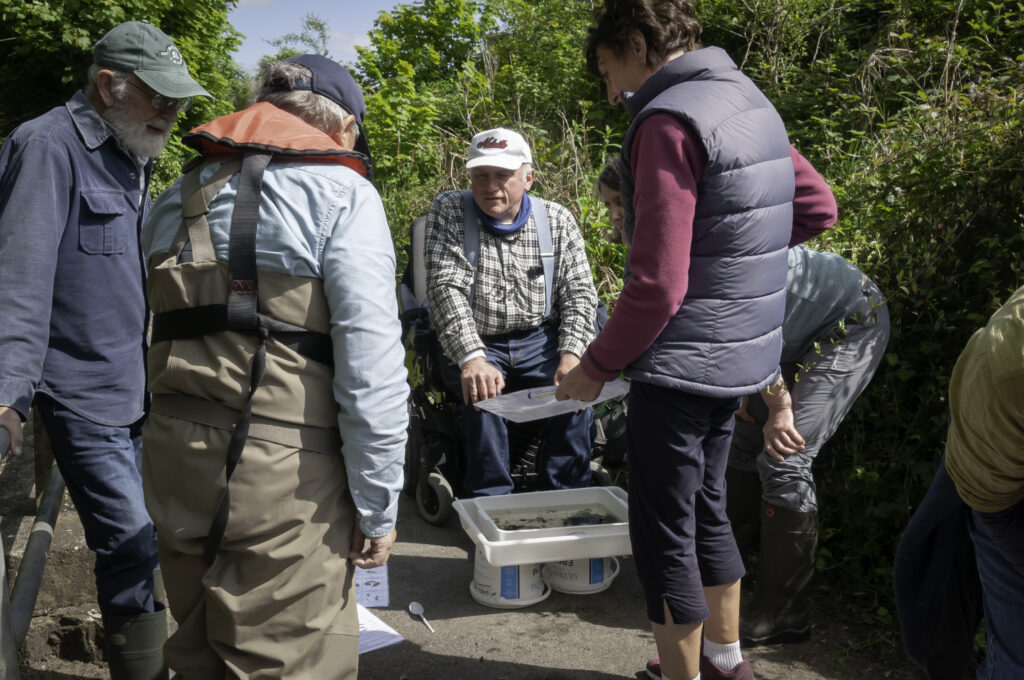
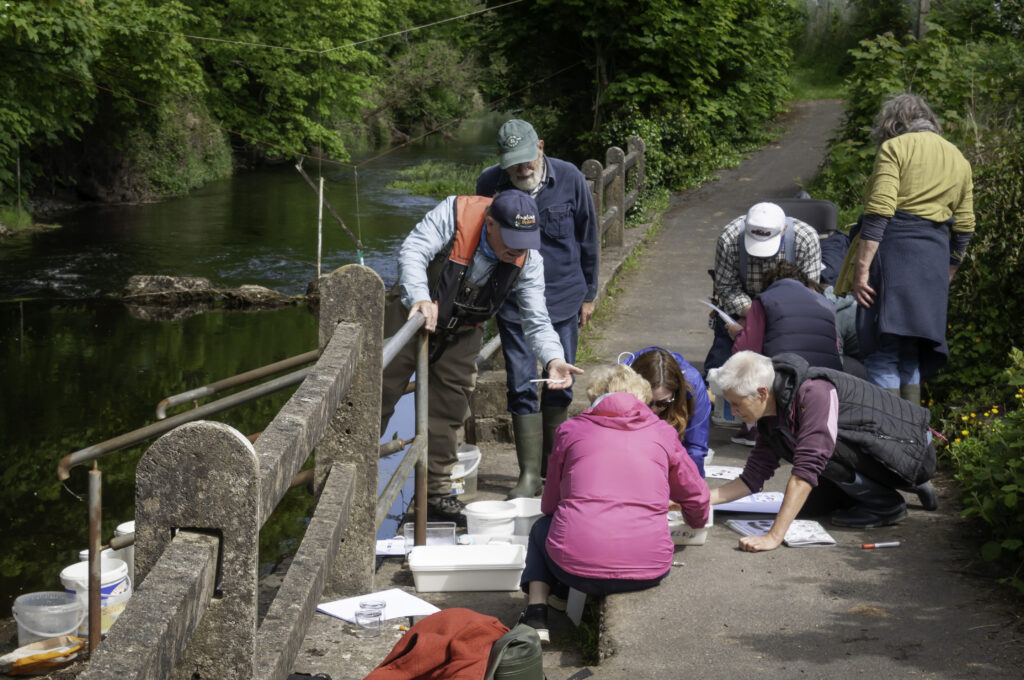
The invertebrate life was fascinating. There were mayflies and stoneflies, shrimps, uncased caddis flies, damselfly nymphs (very impressive!) and white-clawed crayfish. The crayfish is protected and was carefully returned to the river.
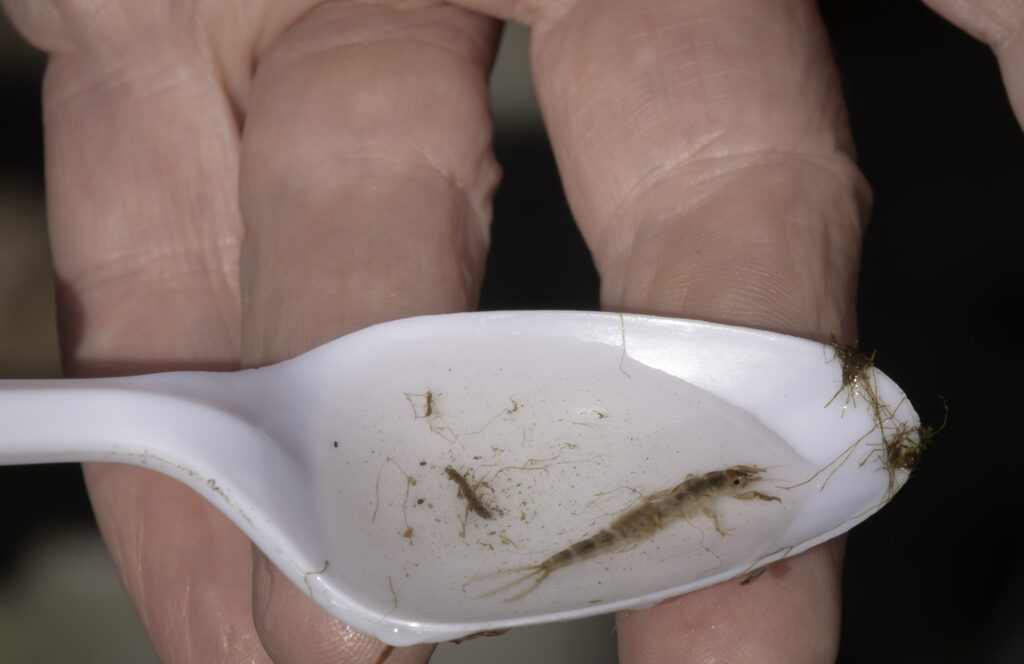
The Manulla River as it flows through Belcarra is also home to the otter which regularly spraint on the steps behind the community centre. The otter obviously rely on crayfish for a good few suppers as their spraint at this location is always full of crayfish shell. Ken Whelan remarked on how well the river looked despite its deep dredging and canalisation under the arterial drainage works of the 1960’s which negatively affected so many natural river and lake systems in Ireland. Many of the aquatic invertebrates we could see in the tray were emerging from the River as we spoke and so we were given a display of their winged form, which we learnt did not last very long. While a mayfly may live for several years on the river bed, its life above water and on the wing is only a few days long – just long enough to breed and lay the eggs of new life back into the river. Grey wagtail were seen bobbing on the rocks in the river. They are likely to have a nest in a crevice in the river wall and feed on the many insects emerging from and flying above the water. This will provide a dusk and night time feast for any bats roosting nearby as well.
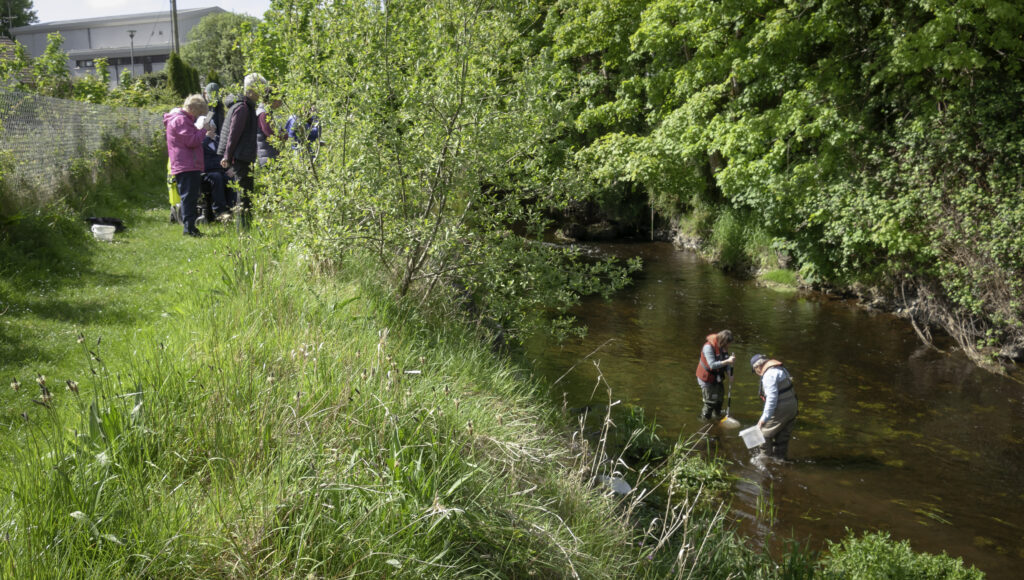
Walshpool Lake
After a cup of tea we visited Walshpool Lake which lies up and over a drumlin only 5 mins from Belcarra village but easily overlooked as it lies pretty much at a dead end. Luckily the lake is far from dead and supports a lovely fringe of freshwater marsh, reedbed and grassland habitat; all providing vital water retention and purification services to the lake. At the north end of the lake there is a very special habitat called Alkaline fen. Fen habitat is peaty and the flora is very rich owing to the influence of limestone bedrock. The fen has many different and unusual plants as well as a damselflies, dragonflies and butterflies.
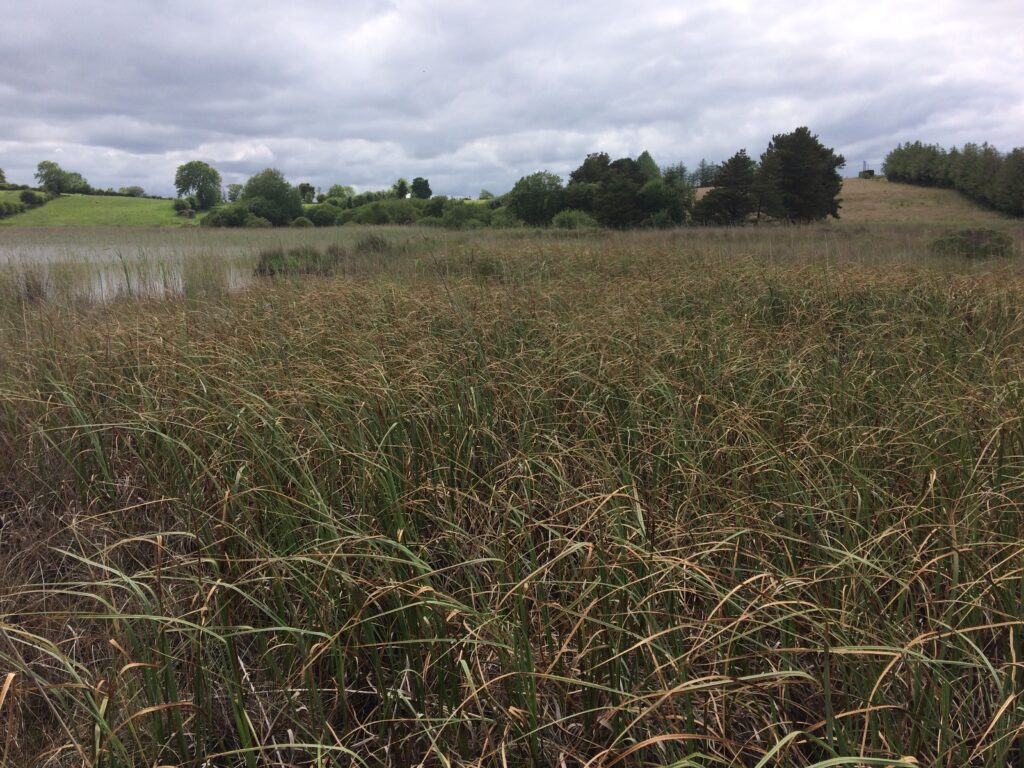
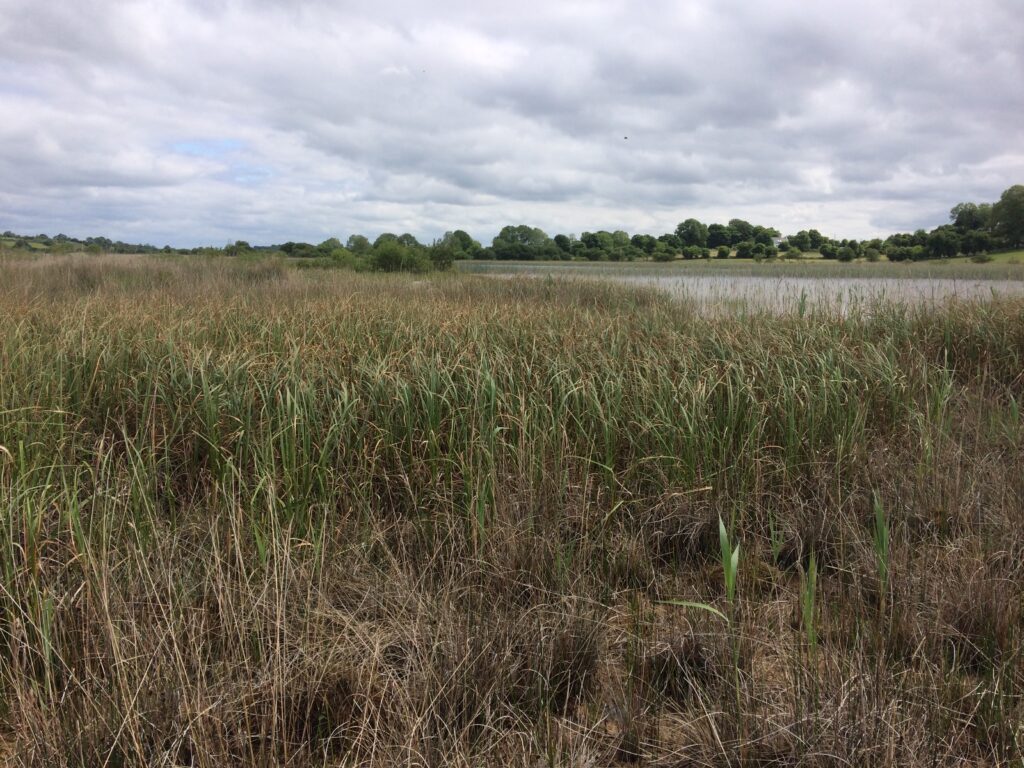

A pair of Common Tern were spotted while we stood on the lake shore. Common Terns winter in Africa and migrate to Ireland to breed on the coast and at inland lakes. Successful breeding is a challenge owing to factors such as mink predation, disturbance and sufficient food to feed young.
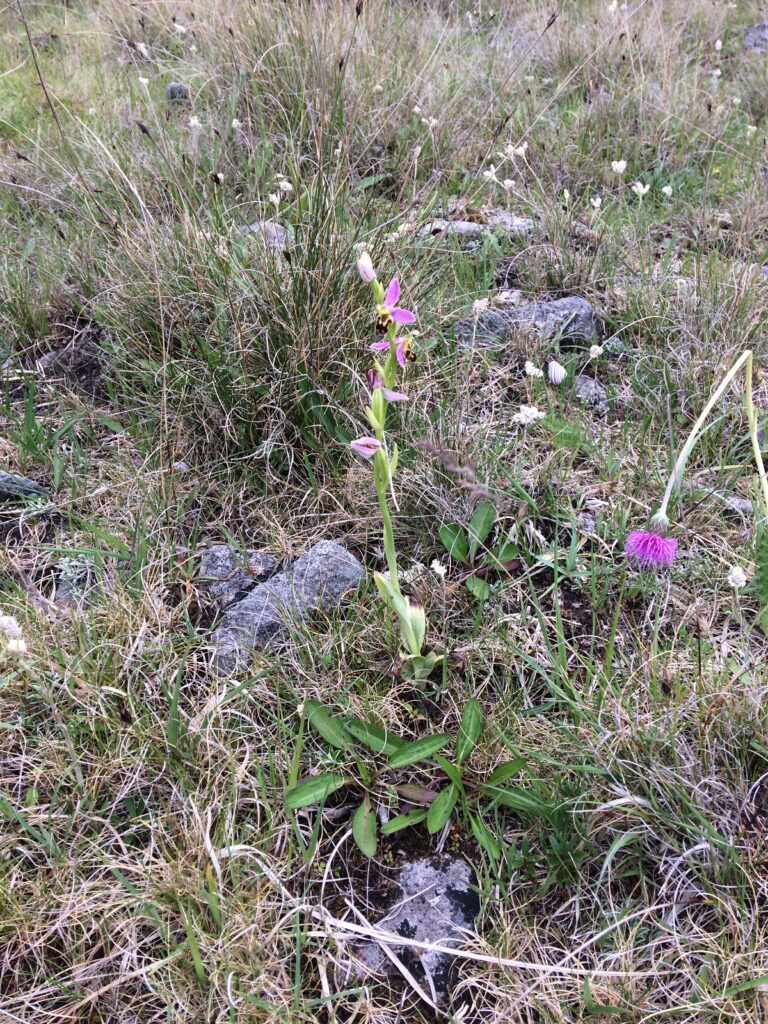
At the lake shore Ken Whelan pointed out the marly lake bottom (chalk like encrusted – typical of limestone lakes) and some amazing plants called Stoneworts (Charophytes). Stoneworts are an algae encrusted with calcium carbonate deposits – making them look a bit stoney. Marl lakes with healthy stonewort populations are another very special and rare habitat which Ireland has a particular responsibility to protect. These lakes are sensitive to enrichment from nutrients and under these conditions stoneworts cannot survive.
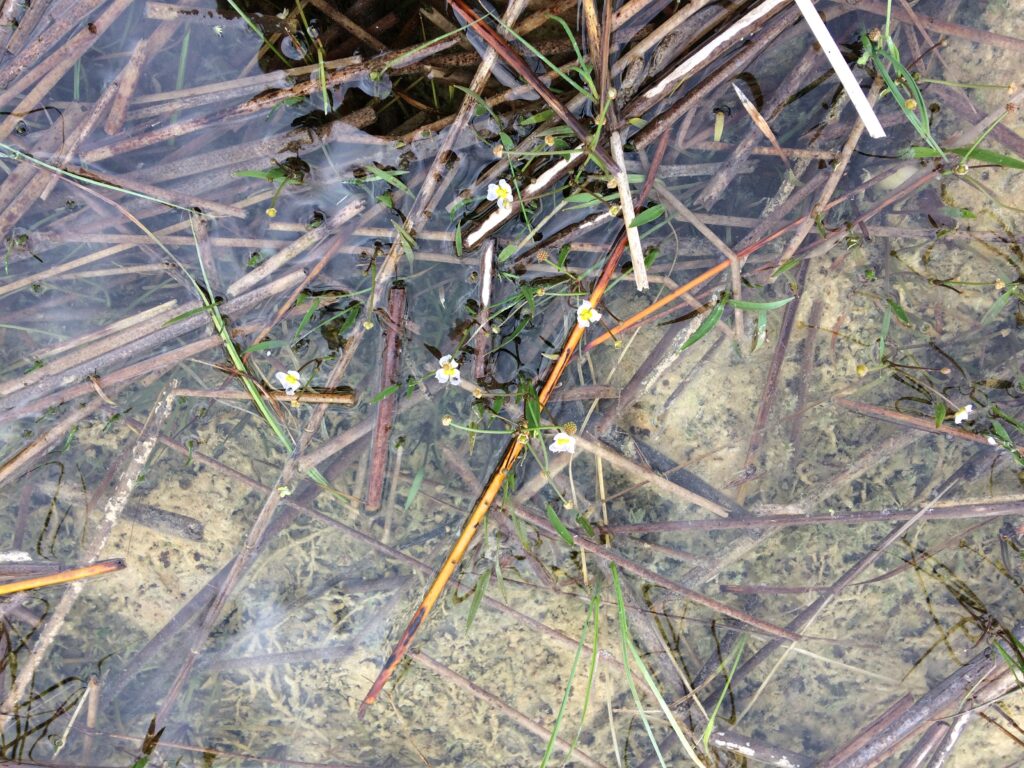
Walshpool Lake has been looked after well by the local community. It was a source of drinking water to the village for many years. It has been classified as a “Blue Dot” lake by the EPA which means it has been of high water quality over a long period of time. After looking out over the lake to the Crannog, we walked back to the cars with a good fill of nature and a glimpse at the world of river and lake wetlands which are rich in life around the village of Belcarra.
NOTES:
More information on hard water lakes at this link.
More information on stoneworts and other aquatic plants at this link.
More information on Blue Dot lakes at this link.
The common tern is a protected species in Europe and in Ireland. More information at this link.
The otter is protected under Irish and European law and is a Red Listed species. More information on otter ecology at this link.
The white-clawed crayfish is considered a globally threatened species and Ireland holds one of the largest surviving populations. It is the only freshwater crayfish species found in Ireland and is protected under both Irish law and the EU Habitats Directive. Native crayfish populations are threatened by non native introductions of crayfish and by the crayfish plague. More information on Crayfish ecology at this link.